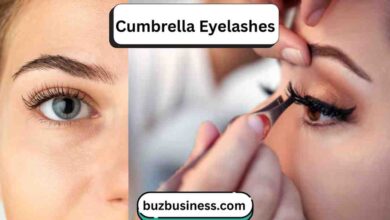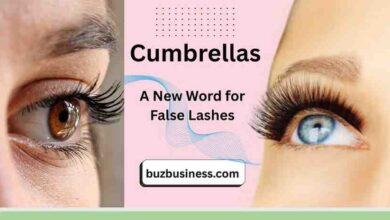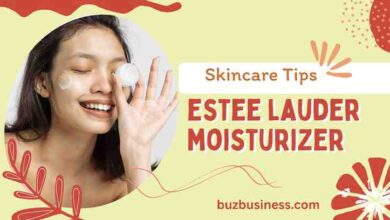
You’re standing in the skincare aisle and it’s like a wall of bottles and tubs. You see products labeled “hydrating lotion”, “moisturizing cream”, “repairing balm” and “daily moisturizer”. The words seem to blend together and you’re confused. You know you need something to stop your skin from feeling dry but what’s the right choice? All of this confusion really comes down to one burning question: what is the moisturizer and lotion difference?
Part of the confusion is that these terms are often used interchangeably in marketing and because some people choose something based on its scent or packaging. And it’s the products, what they do and how they are formulated and function – that is the secret to feeling good in your skin. Choose poorly and you’ll be left with a greasy film, dry skin, or even worse, breakouts.
This ultimate guide will finally clear up the confusion. We’ll get into the science of skincare and break down the moisturizer and lotion difference in a way that’s easy to understand. By the end of this article you’ll be able to walk into any store and choose the right product for your skin.
What is a Moisturizer? The Big Picture
We must first define, before we can compare. For one, a lotion is a form of moisturizer.
For example, you can consider “moisturizer” as the overarching term used for any skincare product that adds or retains water to the outer layer of your skin (stratum corneum). Its primary function is that it helps to prevent skin from feeling dry, enhances barrier function and leaves the skin feeling soft and smooth.
The action of moisturizers is a few-fold, utilizing combinations of three classes of ingredients:
Humectants: These are moisture “magnets”. Humectant ingredients such as hyaluronic acid, glycerin and urea, draw moisture from the underlying layers of the skin or from the atmosphere into the outer layer.
Emollients: Skin smoothers. Ingredients such as shea butter, cocoa butter, ceramides, and fatty acids “bridge the spaces between skin cells and provide a more pleasing feel and experience to the skin”.
Occlusives: moisture sealants. Ingredients such as petrolatum (Vaseline), lanolin and mineral oil sit on the surface of the skin and reduce moisture loss from the skin via transepidermal water loss, “TEWL”.
In fact, anything marketed as a lotion, cream, ointment or gel is technically a moisturizer. The real difference between them is simply the proportion of these ingredients, and mostly the proportion between water and oil.
What is a Lotion? The Lightweight Hydrator
Let’s get specific now. A lotion is a low-viscosity or thin moisturizer. It is characterized by its very high water content. Lotions are lighter, spread more easily, and absorb more readily than creams because they are higher in water content and lower in oil content compared to creams.
Lotions work well as all-around moisturizers. They are nice to use because they give some hydration, courtesy of the humectants, without weighing down or greasing up the skin. They are mainly used to provide instant hydration, and are therefore a common option for daily application.
Key Characteristics of a Lotion:
- High water content, low oil content.
- Light, non-greasy feel.
- Easily absorbed into the skin.
- Can easily spread over large areas of the body.
- Conveniently often comes in a pump bottle.
The Moisturizer and Lotion Difference: A Head-to-Head Comparison
Though a lotion is indeed a moisturizer, the lotion vs. moisturizer distinction is best illustrated by putting a lotion next to its thicker relative, a cream. The comparison itself is what confuses the majority of people.
1. Water vs. Oil Content
This is the largest difference.
- Lotions: More water, less oil. Has a lighter, crisper feel.
- Creams: More oil, less water. 50/50 water/oil emulsion. Thicker, richer.
2. Viscosity and Texture
The feel is affected by the water to oil ratio.
- Lotions: Thin, runny, low viscosity. Leaves low residuals.
- Creams: Thick; of high viscosity. More substantial feeling on the skin, and can leave a layer you can feel.
3. Purpose and Best Use Cases
When and where to use each is determined by formulation.
Lotions Are Used For:
- Normal to Oily Skin: If you don’t require heavy moisturization you will appreciate the light weight non-clogging feel.
- Daytime: Quickly absorbs so you can slip on your clothes without sticking.
- Summer/Humid Weather: When the air feels thick already, a heavy product can feel like it’s suffocating. A lotion will hydrate adequately.
- Body Application: Simple to apply, excellent for large areas such as limbs.
Creams Work Best For:
- Dry/Very Dry Skin: More oil content providing more intense moisturization and barrier restoration.
- Night Use: Lets skin absorb the richer ingredients while sleeping.
- In dry or cold climates: If the air is cold, and/or heating indoors draws moisture from the skin, then a cream is needed to lend a protective barrier.
- Dry Spot Treatment: Ideal for dry, cracking skin on elbows, knees and hands.
So now you know the moisturizer vs lotion difference!
Beyond Lotions and Creams: The Full Moisturizer Family
To be a true expert you must have full knowledge on moisturizers. It’s more than that: it’s not just lotion versus cream. These are the other types, in order from lighter to heavier.
Gels
Gel moisturizers are the lightest of them all. They are oil-free and have a bouncy, jelly consistency. They largely contain water and humectants like hyaluronic acid.
Who It’s Best For: Oily, combination and acne-prone skin.. They hydrate without adding any pore clogging oil. They also have a cool, refreshing feel which can be soothing to irritated or inflamed skin.
Lotions
Lotions are one step more than gels, as we’ve seen. They contain a small percentage of oil, so they work as daily hydrators for normal, oily or slightly dry skins.
Creams
This balanced ratio of oil to water content means that creams are thicker than lotions. They are more intense and longer lasting in terms of moisturization and thus the preferred choice for dry and mature skin with a compromised moisture barrier.
Ointments and Balms
These are the biggest of all. Ointments, such as Vaseline or Aquaphor, have the greatest amount of oil – approximately 80% oil and 20% water. They are highly occlusive.
Best For: Extremely dry, chapped or cracked skin. They are wonderful to treat, and protect compromised skin barriers like chapped lips, cracked heals or to help with eczema. Unless otherwise advised by a dermatologist, they are far too heavy for all-over facial application.
How to Choose the Right Product: A Practical Guide
It’s one thing to know the moisturizer and lotion difference and it’s another thing to apply that knowledge. Let’s talk about how to pick the product that’s right for you.
Choosing Based on Your Skin Type
Oily Skin: Your skin is already oily and produces enough sebum of its own, so you want hydration without greasiness.
Your Best Bet: Oil-free gels or very light weight lotion. Look for non-comedogenic formulas that won’t clog pores.
Dry Skin: Your skin produces minimal sebum and has trouble holding onto moisture; it may feel tight or even flaky at times.
Best Option: Creams. They’re thicker and oilier and will nourish the skin and create a better barrier against water loss. An ointment is a lifesaver for very dry spots.
Combination Skin: Your forehead, nose and chin are oily while your cheeks are dry.
Your Best Value: This is always tough. You could use a lightweight lotion all over or you could “multi-moisturize” – use a lotion or gel on your T-zone and a cream on your drier cheeks.
Normal Skin: Your skin is neither oily nor dry; it’s just right.
Your Best Bet: You’ve got options! Lotions are great for daily, lightweight moisture. And in the winter or if your skin is slightly parched you can easily use a cream instead.
Sensitive Skin: Your skin is aggravated by fragrance, dye or harsh chemicals.
Best Option: Find lotions/creams made for sensitive skin. They should also be fragrance- free, hypoallergenic and contain ceramides, niacinamide or oat extract.
Choosing Based on Body Part: Face vs. Body Lotion
Put your body lotion on your face? The short answer is no, and this is why.
Facial Skin:
The skin on your face is thinner, more delicate, and oiler, with more oil glands than your skin. Face moisturizers (lotions and creams) are lighter and non-comedogenic so as not to cause breakouts.
Body Skin:
The skin on your arms, legs and torso is thicker and tougher. Body lotions are heavier, more fragranced and contain pore-clogging oils, all of which are ill-advised for the face.
If you grab body lotion for your face in an emergency, it won’t be a tragedy, but you shouldn’t make it routine because the ingredients can clog pores and cause acne. Always buy a separate moisturizer intended for the delicate skin on your face.
Choosing Based on the Season
The weather affects your skin’s needs.
Summer/Humid Weather:
Increased levels of humidity equate to a greater presence of water in the atmosphere. You will dry out more slowly. It also tends to be easily maintained and happy with a light lotion or gel product.
Winter/Dry Weather:
The cool air, coupled with heat indoors, viciously depletes your complexion of moisture. This is when to start using a richer cream to obtain a stronger protective barrier and avoid dryness and irritation.
Common Mistakes to Avoid When Moisturizing
Even with the right product you can screw up and defeat your purpose. Here’s a few to be wary of:
Applying to Bone-Dry Skin:
The ideal use of moisturizers is to “lock” in moisture that is already present. Apply the lotion or cream preferably right after a shower or face wash while your skin is still a bit damp.
Using Too Much or Too Little:
A dime-size or pea-size amount is usually sufficient for the face, while for an arm or leg, a quarter-sized amount may be required. If you use too much it feels oily and you’re wasting product, if you use too little you won’t feel sufficiently hydrated.
Ignoring the Ingredients:
It’s not about whether it’s a lotion or a cream. Take a look at the ingredient list. If your skin is dry, seek out ceramides and shea butter. If you have oily skin, seek hyaluronic acid and niacinamide.
Skipping It Entirely:
That is the biggest mistake of all! Oily skin also requires moisture. Oily skin that is dehydrated can “punch back” and produce even more oil as a result of dehydration, creating a cycle of breakouts and shine.
Frequently Asked Questions:
Do I need lotion or moisturizer?
Your skin type determines if you need a lotion or moisturizer. If you have dry, flaky skin that feels tight after washing, a moisturizer will give you the intense hydration and barrier protection you need. If you have normal to oily skin or live in a humid climate, a lightweight lotion will give you the hydration without feeling heavy or greasy. Many people have both and use lotions in the warmer months or daytime and switch to richer moisturizers in the colder months or at night. The key is to pay attention to how your skin responds and adjust accordingly.
What comes first, moisturizer or lotion?
When using both products together, apply the thinner product first and then the thicker one. Lotions are generally lighter and have more water content than moisturizers so you would apply lotion first and then moisturizer. But you don’t usually use both on the same area of skin at the same time as they serve the same purpose at different intensity. Instead you might use a treatment lotion (sometimes called “essence” or “toner”) first and then a moisturizer. Always follow the product instructions as formulations vary and some brands may have different recommendations for their products.
Lotion vs moisturizer for face
When it comes to facial application the moisturizer and lotion difference is more important due to the face being more sensitive. Facial skin is thinner and has more oil glands than body skin so requires special products. Facial lotions are non-comedogenic (won’t clog pores) and have ingredients that target specific concerns like acne or aging. Facial moisturizers are often richer and may have higher concentration of active ingredients for intense treatment. For oily or acne prone skin, lightweight oil free lotions help to provide hydration without increasing oil production. For dry or mature skin, moisturizers offer better protection against environmental damage and moisture loss. Many people change their facial hydrator seasonally, using lotions in summer and moisturizers in winter.
Moisturizer and lotion difference for dry skin
The difference between moisturizer and lotion is biggest for dry skin. Dry skin has no oil and no water, so it needs products that have both and seal them in. Moisturizers are generally way more effective for dry skin because they have higher concentrations of emollients (which soften skin) and occlusives (which create a barrier). These ingredients help repair the skin’s natural barrier function and prevent further moisture loss. Lotions have more water so they can provide immediate but temporary relief for dry skin but don’t have enough protective ingredients to address the underlying causes of dryness. For persistent dry skin, especially during winter months or in dry climates, a rich moisturizer with ingredients like shea butter, ceramides or hyaluronic acid will be way more effective than even the most hydrating lotion.
Moisturizer and lotion difference for face
For facial application the difference is texture, absorption and targeted benefits. Facial lotions are water dominant with a light texture that absorbs quickly, great for normal to oily skin or for use under makeup. They often contain ingredients that address specific concerns like pore size or oil control. Facial moisturizers have a richer texture with more emollients and occlusives, more intense hydration for dry or mature skin. They have higher concentrations of anti-aging ingredients like peptides or retinol. The face requires products specifically formulated for its more delicate skin, so whether you choose a lotion or moisturizer make sure it’s for facial use not body products which may contain fragrances and ingredients too harsh for facial skin.
Can I use lotion and moisturizer together?
Yes you can use lotion and moisturizer together but you need to understand the order and purpose. If you do use both apply the thinner lotion first and let it absorb for 30-60 seconds before applying the richer moisturizer. This works great for very dry skin that needs multiple layers of hydration or when using a treatment lotion with active ingredients you want to penetrate deeply. Another way is to use these products on different areas of the body based on need, maybe a lightweight lotion on your less dry torso and arms and a richer moisturizer on your elbows, knees and feet. You might also use a lightweight lotion during the day and switch to a richer moisturizer at night. While you can use both, most people find that choosing the right single product for their skin type eliminates the need to layer both.
So can’t I just apply lotion?
Yes, absolutely! Lotions are a form of moisturizer. It’s a great everyday product for you if you have normal/oily skin or just like lightness. The important part is to make sure the moisturizer is right for you.
In a word, what is difference between moisturizer and lotion?
The primary moisturizer and lotion distinction is that the water content of a lotion is higher and lotions are lighter than a cream which has a higher oil content and thus is thicker and richer.
Which is better for facial use, creams or lotions?
It totally depends on your skin type. If you have normal or oily facial skin, a lightweight, non-comedogenic lotion will work great. Dry or mature facial skin also benefits from a richer cream. It isn’t that one is “better” than the other, but one might be better for you.
Do I need a lotion and a cream?
Not always, but it often helps a lot. Most people keep a light moisturizing lotion for daytime use, so it fits nicely under makeup, and a heavier cream for night, when you want major reparative action. It is also wise to keep both available for the changing of the seasons.
Is there a difference between a “hydrator” and a “moisturizer”?
This is another often confused topic. A hydrator’s primary purpose is to increase the water content of your skin cells via humectants such as hyaluronic acid. The primary function of a moisturizer is to keep that hydration where it belongs – and not let it escape out. A good product will do both, but certain products such as serums are designed to hydrate and others such as ointments are primarily moisturizers. Lotions and creams tend to have a good compromise between the two.
Conclusion: Empower Your Skincare Choices
Skincare doesn’t have to be daunting anymore. Now that you know the key moisturizer vs. lotion difference, the power is in your hands.
In summary and to review, “Moisturizer” is the general term for products that provide hydration – and retain that hydration. Lotions, creams, gels and ointments are all various types of moisturizers. They are largely distinguished by the amount of water or oil they contain, which controls the consistency of the product and its ideal use.



